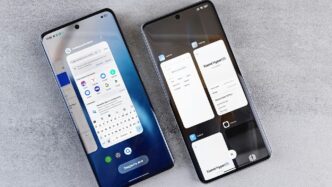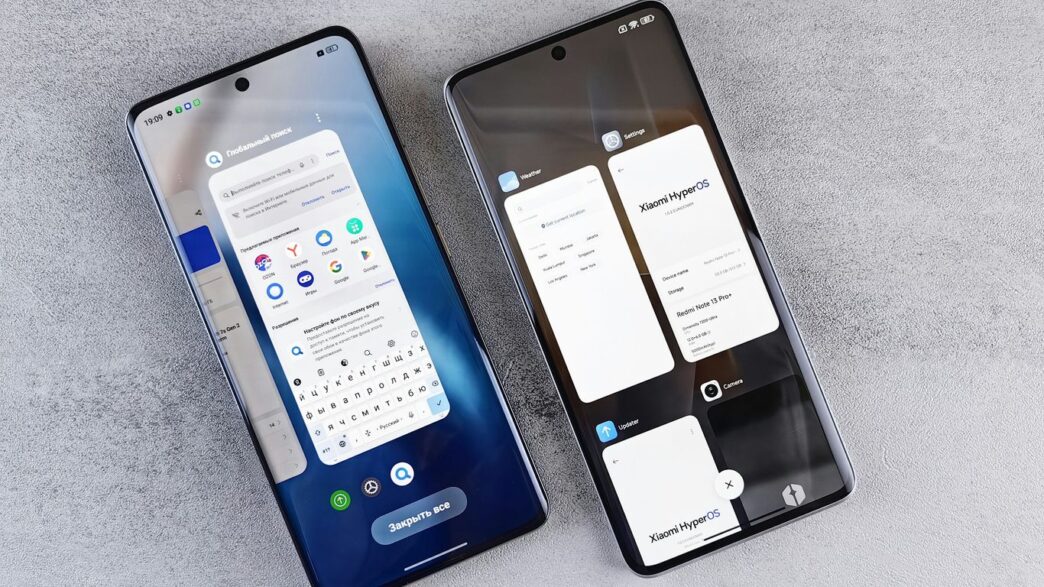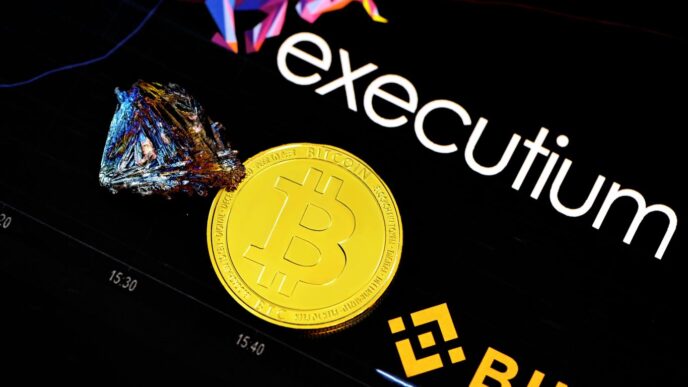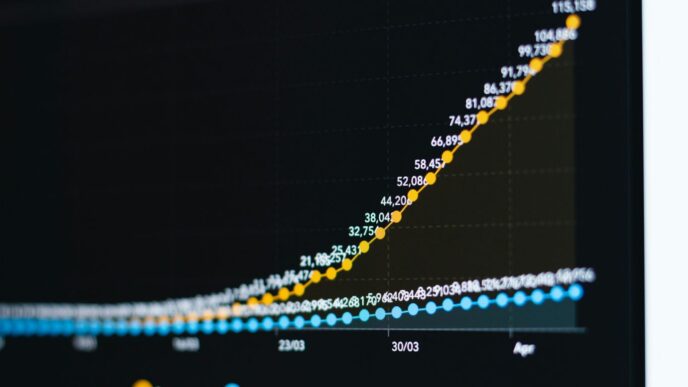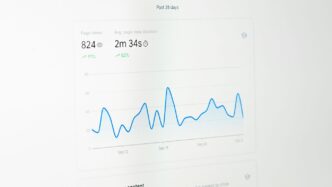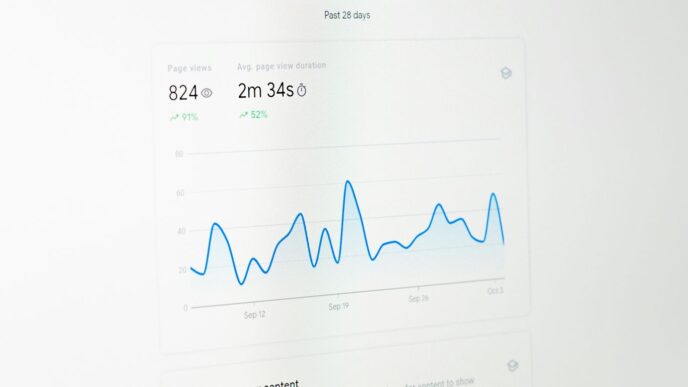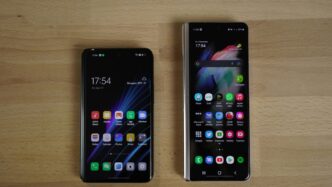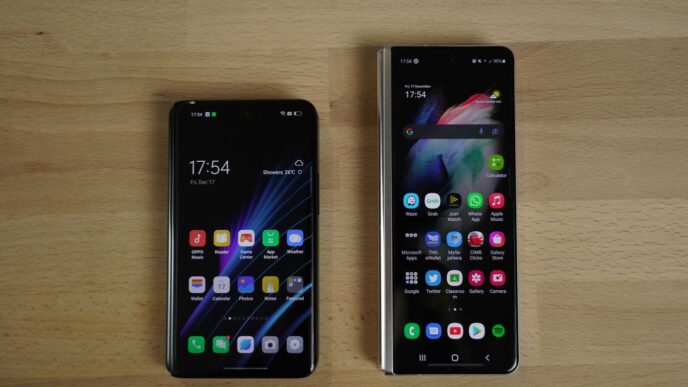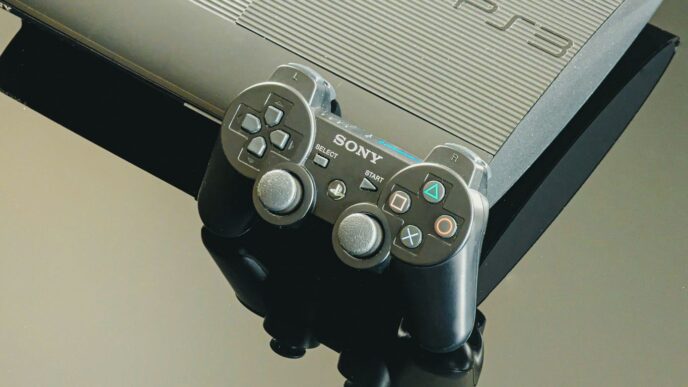Alright, so you’re trying to figure out which of the newest top-tier phones to get, right? It’s always a bit of a headache trying to pick between the Google Pixel 9 Pro and the Samsung S25. They both pack a serious punch, but they go about it in totally different ways. We’re going to break down what makes each one tick, from how they look and feel to how they take pictures and how long they actually last on a charge. Think of this as your no-nonsense guide to the google pixel 9 pro vs samsung s25 showdown, helping you cut through the hype and find the phone that’s actually right for you.
Key Takeaways
- The Google Pixel 9 Pro and Samsung S25 Ultra represent the best of what Android offers, each with a distinct approach to user experience and features.
- Design-wise, the Pixel 9 Pro leans towards refined ergonomics and a clean look, while the Samsung S25 Ultra prioritizes a utilitarian build with S Pen integration for enhanced productivity.
- Performance sees the Pixel 9 Pro leveraging Google’s AI-focused Tensor G4 chip for smart tasks, contrasted with the Samsung S25 Ultra’s likely Snapdragon 8 Elite for raw processing power.
- Camera systems differ significantly: the Pixel 9 Pro excels in AI-driven computational photography for effortless, natural shots, whereas the S25 Ultra provides greater hardware versatility, especially for zoom and manual control.
- Software experience splits between Google’s clean, AI-integrated Android on the Pixel and Samsung’s feature-rich, customizable One UI on the S25 Ultra.
Design and Display: A Tale of Two Philosophies
Alright, let’s talk about how these two phones look and feel. It’s kind of like comparing a sleek, modern art piece to a really well-built tool. Both are impressive, but they go about it in totally different ways.
Google Pixel 9 Pro: Refined Ergonomics and Minimalist Aesthetics
The Pixel 9 Pro feels like Google really thought about how you actually hold and use a phone. It’s got this smooth, rounded-off vibe that just sits nicely in your hand. It’s not too big, not too small, and the weight feels just right. Google’s gone for a clean look here, with that signature camera bar, but it seems a bit more blended in this time around. It’s understated, you know? It doesn’t scream for attention, but you can tell it’s a premium device. They’ve used nice materials, and it just feels solid without being clunky. It’s the kind of phone that feels good to use all day long.
Samsung Galaxy S25 Ultra: Utilitarian Design and S Pen Integration
Samsung, on the other hand, is all about the business with the S25 Ultra. This phone is built like a tank, with sharp edges and a really robust feel. It’s definitely a bigger device, and you notice it when you pick it up. But that size comes with a purpose: it houses that amazing display and, of course, the S Pen. The S Pen tucks right into the phone, which is super convenient if you’re someone who likes to jot down notes or sketch things out on the go. It’s less about soft curves and more about a functional, almost industrial design. It’s built to last and to do a lot of things.
Display Showdown: Vibrant Colors and Peak Brightness
When it comes to the screens, both of these phones are absolutely stunning. You’re going to get incredibly sharp images and smooth scrolling on either one.
- Pixel 9 Pro: It’s got a gorgeous display that’s super bright, especially when you’re watching HDR content. Colors pop, and blacks are deep. It’s easy to see even when you’re outside on a sunny day.
- Galaxy S25 Ultra: This one is a bit larger and has a slightly higher resolution, so it’s technically packing more pixels. Samsung’s screens are always known for their vibrant colors, and this is no exception. It also gets incredibly bright, and the new Gorilla Armor glass helps cut down on glare, which is a nice touch.
| Feature | Google Pixel 9 Pro | Samsung Galaxy S25 Ultra |
|---|---|---|
| Size | 6.8 inches | 6.9 inches |
| Resolution | 1344×2992 | 1440×3120 |
| Peak Brightness | 3000 nits (HDR) | 2600 nits |
| Protection | Gorilla Glass Victus 2 | Gorilla Armor 2 |
Honestly, for most people, the difference is going to be pretty minor. Both displays are top-notch. But if you’re someone who really cares about having the absolute sharpest screen or needs that S Pen functionality, the S25 Ultra might have a slight edge. If you want a phone that feels great in your hand and has a display that’s amazing for media, the Pixel 9 Pro is a fantastic choice. You can check out more about how these devices stack up in our full comparison.
Performance: AI Prowess Versus Raw Power

This is where things get really interesting, right? It’s not just about how fast a phone can open apps anymore; it’s about what it can do with that speed, especially when it comes to AI. Both Google and Samsung have poured a ton of effort into this, but they’ve taken pretty different paths.
Google Tensor G4: Optimized for Intelligence
Google’s whole game with the Pixel 9 Pro is making the phone smarter. The Tensor G4 chip is built from the ground up with AI in mind. Think of it like a specialized brain that’s really good at understanding language, recognizing images, and making your photos look amazing without you having to do much. It’s not always going to win in a raw speed contest against the top chips, but for everyday tasks and Google’s AI features, it’s incredibly smooth. Plus, Google is really pushing its Gemini AI, and the Tensor G4 is the engine that makes all that work right on your phone.
Snapdragon 8 Elite: Unadulterated Speed
Samsung, on the other hand, is sticking with what works and pushing it even further with the Snapdragon 8 Elite. This chip is all about raw power. If you’re a heavy gamer, a video editor on the go, or just someone who likes to have a dozen apps open at once without a hiccup, this is your guy. It’s designed for maximum performance across the board. While it can handle AI tasks too, its main strength is just sheer, unadulterated speed. It’s built to be a powerhouse for anything you can throw at it.
RAM and Storage: Multitasking and Speed
When it comes to memory and storage, both phones are pretty generous, but there are some differences:
- Google Pixel 9 Pro: Often starts with a solid 16GB of RAM, which is great for keeping lots of apps open and switching between them quickly. Storage options usually go up to 1TB, using UFS 3.1 technology.
- Samsung Galaxy S25 Ultra: Typically offers 12GB of RAM as a base, with a potential 16GB option for the highest storage tiers. It uses faster UFS 4.0 storage, which means apps load a bit quicker and files transfer faster. Storage also goes up to 1TB.
So, while the Pixel might have a slight edge in base RAM for multitasking, the S25 Ultra’s faster storage tech is a nice bonus for quick access to your data.
Camera Capabilities: Computational Brilliance Meets Hardware Versatility
This is where things get really interesting, because the Pixel 9 Pro and the Samsung S25 Ultra approach photography from totally different angles. It’s like one is a master painter using algorithms, and the other is a seasoned photographer with a whole bag of tricks.
Pixel 9 Pro’s AI-Driven Photography
The Pixel 9 Pro really leans into its smarts. Google’s Tensor G4 chip works overtime behind the scenes, making sure every shot looks its best. You know how sometimes you take a picture, and it’s just… okay? The Pixel tries to fix that before you even press the button. It’s got this neat trick called “Best Take” where it can swap out faces in a group photo if someone blinked. And “Magic Editor” lets you move things around or even add stuff to your pictures using AI, which is pretty wild. For anyone who just wants to pull out their phone and snap a great photo without fussing, the Pixel is hard to beat.
Here’s a quick look at its camera setup:
- Main Camera: 50MP sensor, great for everyday shots and low light.
- Ultrawide Camera: 48MP, good for fitting more into the frame, and it can even do macro shots.
- Periscope Telephoto Camera: 48MP with 5x optical zoom. This lets you get pretty close to distant subjects without losing much quality.
And don’t forget “Real Tone,” which is Google’s way of making sure skin tones look natural and accurate, no matter who you’re photographing. Plus, “Night Sight” is still one of the best for taking pictures when it’s really dark.
Galaxy S25 Ultra’s Versatile Lens System
Samsung, on the other hand, is all about giving you options. The S25 Ultra is like a Swiss Army knife for cameras. It’s got a ton of hardware to play with, especially when it comes to zooming.
- Main Camera: A massive 200MP sensor. This thing captures a ridiculous amount of detail, and it uses something called pixel-binning to make photos look good even when the light isn’t perfect.
- Ultrawide Camera: 50MP, so even your wide shots will be sharp.
- Telephoto Camera: A 10MP lens with 3x optical zoom for those medium-range shots.
- Periscope Telephoto Camera: Another 50MP lens, this one giving you 5x optical zoom. Together, these two telephoto lenses mean you can zoom in really far, up to 100x with digital zoom, which Samsung calls “Space Zoom.”
Samsung’s photos often have a bit more pop and saturation, which some people really like. They also have features like “Expert RAW” if you want to get into the nitty-gritty of editing your photos yourself.
Video Recording and Special Features
When it comes to video, both phones are pretty capable. The S25 Ultra can shoot in 8K at 30fps, and it’s got some really solid stabilization. Samsung’s “Nightography” is also pretty good for low-light video. The Pixel 9 Pro also shoots up to 8K video, and its “Video Boost” feature processes your footage in the cloud to make it look even better, especially in tough lighting. It also has “Audio Magic Eraser” to help clean up distracting noises in your videos, which is a neat touch. For most people, either phone will shoot fantastic video, but if you’re a serious videographer who wants every possible setting and the absolute best zoom for video, the S25 Ultra might have a slight edge in sheer hardware flexibility. The Pixel’s AI editing tools, however, are a game-changer for making quick edits to photos after you’ve taken them.
Software Experience: Google’s Clean Android vs. Samsung’s Feature-Rich One UI
When it comes to the software on these phones, it’s really about two different paths. Google’s Pixel 9 Pro is all about that pure Android feeling. It’s like getting the operating system straight from the source, with all the latest Google features and updates arriving first. Think of it as a clean, straightforward experience that just works.
Samsung, on the other hand, takes a different approach with its One UI. It’s packed with so many options and customizations, you could spend days tweaking things. It’s definitely not as simple as the Pixel, but if you like to have control over every little detail, Samsung’s got you covered. This is where personal preference really shines through.
The Pixel’s Seamless Google Integration
The Pixel 9 Pro really leans into what Google does best. Everything feels connected to Google services, from Assistant to Photos. It’s designed to be smart and helpful without you having to do much. You get the latest Android version with all the new bells and whistles, and Google promises a lot of years of updates, so your phone stays current for a long time. It’s a very focused experience, built around Google’s vision for how a phone should work.
Samsung’s Extensive Customization Options
Samsung’s One UI is a whole different ballgame. It’s like a digital playground for tinkerers. You can change themes, rearrange the lock screen, add all sorts of widgets, and generally make the phone look and feel exactly how you want it. It’s a lot more involved than the Pixel’s setup, but the payoff is a device that’s truly yours. Plus, Samsung has its own set of features that work well together, especially if you have other Samsung devices.
AI Features: Gemini Versus Samsung’s AI Suite
Both phones are pushing hard on AI, but in slightly different ways. The Pixel 9 Pro uses Google’s Gemini AI, which is deeply woven into the phone’s functions. It helps with things like summarizing text, translating conversations on the fly, and making your photos look better using smart processing. Samsung is also bringing its own AI tools, likely building on what we saw with the S24 series. Expect features that help you extract text from images, translate calls, and even generate unique wallpapers. It’s a bit of a race to see whose AI can be more helpful in everyday tasks. Samsung has also committed to a very long support period for software updates, matching Google’s promise, which is great news for long-term ownership.
Battery Life and Charging: Endurance and Efficiency
When you’re out and about, the last thing you want is your phone dying. Both the Pixel 9 Pro and the Galaxy S25 Ultra have beefy batteries, but how do they actually hold up? Let’s break it down.
Pixel 9 Pro’s Battery Capacity and Charging Speeds
The Pixel 9 Pro comes with a 5060 mAh battery. It’s a pretty solid number, and Google has been working on making their phones last longer. For charging, you’re looking at 37W wired charging, which gets you to about 63% in half an hour. If you prefer going wireless, it supports 23W with a Pixel Stand, or a standard 12W with other Qi chargers. It also has reverse wireless charging, which is handy for topping up earbuds or a friend’s phone in a pinch.
Galaxy S25 Ultra’s Power Management
Samsung’s S25 Ultra packs a 5000 mAh battery. This phone is known for its efficiency, especially with the new Snapdragon chip. Early reports suggest it can easily go a full day, even with heavy use. When it’s time to charge, you get 45W wired charging, which is quite fast – hitting around 71% in just 30 minutes. Wireless charging is supported at 15W, and it also offers reverse wireless charging at 4.5W.
Wireless Charging and Reverse Charging Capabilities
Both phones offer wireless and reverse wireless charging, which is pretty standard for flagships these days. The Pixel 9 Pro has a slight edge with its faster 23W wireless charging when using the Pixel Stand, making cable-free charging quicker. The S25 Ultra’s 15W wireless charging is still good, and its 4.5W reverse wireless charging is a bit faster than the Pixel’s 12W reverse charging. It’s nice to have these options, especially when you’re on the go and don’t have a charger handy.
Here’s a quick look at the specs:
| Feature | Google Pixel 9 Pro | Samsung Galaxy S25 Ultra |
|---|---|---|
| Battery Capacity | 5060 mAh | 5000 mAh |
| Wired Charging | 37W | 45W |
| Wireless Charging (Max) | 23W (Pixel Stand) | 15W |
| Reverse Wireless | 12W | 4.5W |
The Verdict: Which Flagship Reigns Supreme in the Google Pixel 9 Pro vs Samsung S25 Showdown?
Alright, so we’ve gone through all the nitty-gritty details of the Google Pixel 9 Pro and the Samsung Galaxy S25 Ultra. It’s a tough call, right? Both are seriously impressive phones, and honestly, you can’t really go wrong with either. But if you’re still on the fence, let’s break down who each phone is really for.
Who Should Choose the Google Pixel 9 Pro?
If you’re all about that clean Android experience and want Google’s smarts baked right in, the Pixel 9 Pro is probably your jam. It’s the phone for people who appreciate Google’s AI features, especially when it comes to photography. You know, those shots that just look right without you having to fiddle with settings forever? That’s the Pixel’s magic. It’s also a bit more compact and easier to handle for some folks. Plus, if you’re deep in the Google ecosystem, this phone just fits.
- You love a simple, uncluttered Android interface.
- Computational photography is a big deal for you.
- You want Google’s latest AI features front and center.
- You prefer a slightly smaller, more ergonomic design.
Who Should Choose the Samsung Galaxy S25 Ultra?
Now, the S25 Ultra. This is the phone for the power user, the multitasker, the one who wants everything. That S Pen is a game-changer if you’re into note-taking, drawing, or just precise control. Samsung’s hardware is top-notch, and the camera system, while different from the Pixel’s, is incredibly versatile. If you need a device that can pretty much do it all, from serious work to casual gaming, and you don’t mind a larger phone, the S25 Ultra is calling your name. It’s a mobile workstation, really.
- You need the productivity boost of the S Pen.
- You want the most versatile camera hardware available.
- You enjoy Samsung’s feature-rich One UI and customization options.
- You don’t mind a larger, more substantial device.
Final Considerations for Your Purchase
Ultimately, the choice between the Pixel 9 Pro and the Galaxy S25 Ultra comes down to your personal priorities. Do you value Google’s intelligent software and AI-driven camera performance, or do you crave Samsung’s hardware prowess and the productivity of the S Pen? Both phones represent the peak of Android technology right now. The Pixel 9 Pro is the smart, refined choice for AI enthusiasts, while the S25 Ultra is the ultimate do-it-all device for power users. Whichever you pick, you’re getting a fantastic smartphone that will serve you well. For the latest deals and to compare these amazing devices further, check out Mobihub Electronics.
So, Which One Should You Get?
Alright, we’ve gone through all the nitty-gritty details, and it’s clear that both the Google Pixel 9 Pro and the Samsung S25 are absolute powerhouses. If you’re all about that clean Android vibe, smart AI features that actually work, and a camera that just nails it without you having to fiddle with settings, the Pixel 9 Pro is probably your jam. It feels really smooth and just gets things done. But, if you’re someone who needs the absolute most power for gaming, loves to draw or take notes with a stylus, and wants a camera system with tons of zoom options and controls, then the Samsung S25 is likely the way to go. It’s a bit of a do-it-all machine. Honestly, you can’t really go wrong with either. It just boils down to what you care about most in a phone. Pick the one that feels right for you, and you’ll have a fantastic device for years to come.
Frequently Asked Questions
Which phone is better for taking pictures, the Pixel 9 Pro or the Samsung S25 Ultra?
Both phones are amazing at taking photos! The Pixel 9 Pro uses smart software to make your pictures look great with little effort, especially in low light. The Samsung S25 Ultra has more lenses and can zoom in much further, giving you more options for different kinds of shots. It’s like choosing between a super-smart automatic camera (Pixel) and a versatile camera with lots of cool lenses (Samsung).
Is the Samsung S25 Ultra’s S Pen really useful?
Yes, if you like to draw, take notes quickly, or be really precise with your phone, the S Pen is a big deal. It’s built right into the phone and lets you do things you can’t with just your finger. If you don’t think you’ll use it, it might not be a deciding factor.
Which phone is faster for games and heavy apps?
The Samsung S25 Ultra, with its Snapdragon chip, is generally expected to be a bit faster for really demanding games and apps that need a lot of processing power. However, the Pixel 9 Pro is super smooth for everyday tasks and is really good at handling smart AI features.
What’s the difference in how the phones look and feel?
The Pixel 9 Pro often has a more rounded and comfortable feel in your hand, with a simpler, cleaner look. The Samsung S25 Ultra is a bit more boxy and feels very solid and durable, especially with its titanium frame. It’s designed to be tough and functional.
Which phone’s battery lasts longer?
Both phones should last you through a full day for most people. Battery life can change depending on how you use your phone. Reviews often show them performing very similarly, but it’s always best to check specific tests once they are released.
Which phone is better for someone who just wants a simple, easy-to-use phone?
The Google Pixel 9 Pro is often recommended for people who prefer a straightforward, clean Android experience. It focuses on making things easy and smart with Google’s own services. Samsung’s One UI has a lot more features and options, which can be great but also a bit more complex for some users.

